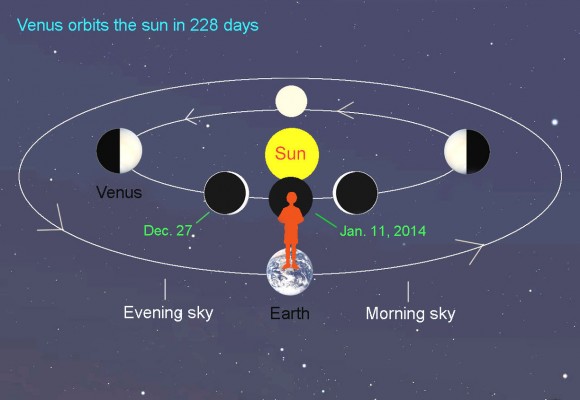Recently as I returned from an early-morning hike just at dawn, I looked to the east and saw a simple, but beautiful sight — a single bright star shining in the eastern sky, defying the increasing sunlight. I watched for a while until it lost the battle and faded from view.
Of course, it wasn't a star at all; it was the planet Venus, known in this phase of its orbit as "the morning star." I was thrilled to notice it this week in its morning phase, because of the symbolism it evokes. It will be visible for several more months in the morning sky, then will "disappear" behind the sun in late summer, to reappear at the end of the year as "the evening star."
Because Venus is closer to the sun than Earth, and has a 225-day "year" (orbit around the sun), it sometimes appears in the morning and sometimes in the evening. When it's on the "trailing" side of the sun, it appears in the evening sky coming into view as the sun sets — the "Evening Star." When its orbit takes it to the other side, it "leads" the sun in the morning, appearing in the sky for an hour or two before dawn — the "Morning Star." Ancient observers thought these two manifestations were different celestial bodies; the Greeks called the morning star Phosphoros, “the bringer of light,” and the evening star Hesperos, “the star of the evening.”






